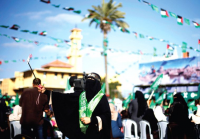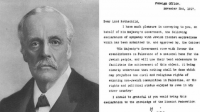
Links
Sheba Medical Centre
Melanie Phillips
Shariah Finance Watch
Australian Islamist Monitor - MultiFaith
West Australian Friends of Israel
Why Israel is at war
Lozowick Blog
NeoZionoid The NeoZionoiZeoN blog
Blank pages of the age
Silent Runnings
Jewish Issues watchdog
Discover more about Israel advocacy
Zionists the creation of Israel
Dissecting the Left
Paula says
Perspectives on Israel - Zionists
Zionism & Israel Information Center
Zionism educational seminars
Christian dhimmitude
Forum on Mideast
Israel Blog - documents terror war against Israelis
Zionism on the web
RECOMMENDED: newsback News discussion community
RSS Feed software from CarP
International law, Arab-Israeli conflict
Think-Israel
The Big Lies
Shmloozing with terrorists
IDF ON YOUTUBE
Israel's contributions to the world
MEMRI
Mark Durie Blog
The latest good news from Israel...new inventions, cures, advances.
support defenders of Israel
The Gaza War 2014
The 2014 Gaza Conflict Factual and Legal Aspects
To get maximum benefit from the ICJS website Register now. Select the topics which interest you.
Reflections on the Second Lebanon War
Reflections on the Second Lebanon War
(An abridged version of this article appeared in the Jerusalem Post, 23/6)
10 years since the Second Lebanon War. For those of us who took part in it, that war remains, always just in view. Like a suitcase filled with items of vivid memory, waiting quietly in the corner of a room.
It was an entirely inglorious and partially botched and inconclusive affair. A ‘great and grave missed opportunity’ as the second report of the Winograd Committee termed it.
It has also been rapidly forgotten. This, it seems, is the way of the small wars that Israel fights these days. None of them passes into legend, as did the great conflicts of the states’s foundation. Today’s conflicts, after a short time, become largely the private property of those who participated in them.
That’s perhaps not a bad thing. Perhaps it is akin to the rapidity with which Israeli cities clear up and move on after terror attacks. Still, the long quiet that has followed the 2006 war on the northern border has helped to further obscure some of the lessons of that summer. It is worth therefore recalling, in unforgiving focus, some of what took place.
A Cabinet led by individuals with minimal security experience (and a prime minister and president now serving jail terms), and an IDF led by its first chief of staff from the Air Force set out for war with the Iranian proxy Hizballah organization on July 12th, 2006.
It is now evident that no coherent and achievable plan for the conduct of the war had been decided at the rushed and overheated Cabinet meeting that set it in motion.
This problematic, unprepared leadership was in turn commanding an army ill-suited for the war it would need to fight.
There were two reasons for the IDF’s state of unreadiness:
The first was practical: the 2006 war came immediately after an intensive five year period of counter-insurgency, in which the IDF was engaged against a large scale Palestinian uprising. The demands of the Second Intifada left little time for training for conventional war.
The challenges faced by troops at that time were considerable. But they were mainly of a police-like nature, not employing or testing the specialized skills of front line military units in battlefield conditions.
This army in 2006 found itself facing a well armed, mobile enemy, on terrain which the Israeli side knew far less well than its foe.
The resulting difficulties were compounded by a second, conceptual issue.
The 2006 war was not the fight the army was expecting. Chief of Staff Dan Halutz expected to spend his period at the IDF’s helm facing the key challenge of the Iranian nuclear program and focusing on ballistic missile defense. Future wars, it was assumed, would be fought using air power, with small numbers of trained specialists on the ground.
As a result, resources had in preceding years been diverted from training the large, reserve land army. It was assumed that this was a force unlikely to be used.
In 2006, some reserve armored formations, as a result, went into battle against Hizballah having taken part in only one training exercise using tanks in the previous half decade. Full disclosure: I was a member of such a force.
These were the circumstances in which Israel went to war in 2006.
The war for the greater part of its duration consisted of limited ground operations by the IDF in an area adjoining the border, air operations up to Beirut, as well as a successfully maintained naval blockade; and on Hizballah’s side, defense of areas under ground attack and a successful effort to maintain throughout a constant barrage of short-range rockets on northern Israel.
A ceasefire came into effect at 8:00 a.m. on August 14, 2006, following the passing of UN Resolution 1701. The end of the fighting found some IDF forces deployed at the Litani River, but with Israel far from control of the entire area between the river and the Israeli-Lebanese border.
Looking back, it is clear that hesitant Israeli political leadership, and a lack of an overall plan for the war were the reason for its inconclusive results. Had the IDF, even the poorly prepared force that entered the war of 2006, been presented with clear orders at an early stage to move forward into Lebanon, according to one of the available plans for achieving this, a less ambiguous result could have been achieved. No such order was ever given.
Much public anger followed the war and its inconclusive results, as Hizballah and its friends in the west sought to build a narrative of ‘divine victory’ from the events.
From the perspective of a decade later, however, much of the euphoria of Hizballah and the despair on parts of the Israeli side seem exaggerated. The results of the war from an Israeli perspective in 2016 are mixed.
The border has indeed been quieter since 2006 than at any time since the late 1960s. This fact in itself says more about Hizballah’s true assessment following the damage suffered in 2006 than any al-Akhbar editorial excitedly proclaiming divine victory.
And of course Hizballah leader Hassan Nasrallah himself told a Lebanese TV channel shortly after the war that had the movement known of the scale of the IDF response, Hizballah would have never have carried out the kidnappings which sparked the war.
At the same time, Resolution 1701, which was intended to keep the Shia Islamist movement north of the Litani has failed. Hizballah has built an extensive new infrastructure south of the river since 2006, under the noses of UNIFIL and often with the collusion of the Lebanese Armed Forces. And Hizballah has vastly increased its rocket and missile capacity
In retrospect, 2006 was perhaps most significant in that it introduced a type of warfare and a type of force which has now proliferated across the region – namely, military entities which are neither regular armies nor guerrilla movements in the classic sense. Rather, they are potent combinations of the two.
These forces carry no state flag with them. Indeed, often they are stronger than the forces of the notional state on whose territory they operate. They possess neither air power, nor much in the way of armored or artillery or naval capacities. Yet they operate not merely as guerrillas but rather as light infantry forces, holding ground and defending it, while making adept use of 21st century media to fight the propaganda battle.
Hizballah was the prototype of such a force, and it remains among the strongest of them.
But today, the entire landscape between the Mediterranean Sea and the Iraq-Iran border proliferates with groups of this type. Jabhat al-Nusra and Ahrar al-Sham and Iraq’s Shia militias and even the Assad regime’s National Defence Force represent a variety of opposed causes and perspectives. But they are all hybrid forces, light infantries of varying quality, parallel entities to Hizballah.
This highlights perhaps the most central point regarding the 2006 war. In its aftermath, as Hizballah and Iran celebrated their divine victory, it appeared that the prospect was one of ongoing bloodletting between Israel and a regional alliance committed to its destruction, with Hizballah as the primary military instrument on the ground.
Today, that landscape has changed beyond recognition. Hizballah and its Iranian patron are engaged in a region-wide war against the Sunni Arabs. In Yemen, Iraq and above all Syria, the movement and its patron are up to their necks in an unending conflict. Hizballah’s latest woes include fights between its members and Assad’s troops in the Aleppo area, and the loss of around 1500 men in the morass of the Syrian war. For as long as this war continues, it seems likely that no repeat of 2006 is on the horizon. And even if it ends, the damage suffered in 2006 is likely to give Hizballah and its patron continued pause for thought.
What all this ultimately means is that we should be thankful for those who came before us. Lebanon 2006 shows that even at a low point in terms of training and planning, led by an unsuitable chief of staff, with an inexperienced and as it turns out largely corrupt political leadership at the helm, Israel’s armed forces were still of sufficient quality to be capable of delivering a blow to a powerful enemy instructive enough to ensure a period of subsequent silence, which lasts to this day. Broader regional circumstances beyond the control of either Israelis or Lebanese Shias have certainly added to this effect. The main question, though – whether Israeli society and its armed forces have sufficiently internalized and acted on the lessons taught in the burning summer of 2006 – remains a subject of daily relevance to which a final answer can not yet be given.
# reads: 269
Original piece is https://jonathanspyer.com/2016/06/23/reflections-on-the-second-lebanon-war/





















